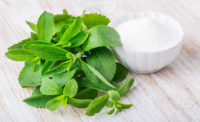Back in November 2018, Innova Market Insights published its forecasted “Top 10 Trends for 2019.” Among them was “a fresh look at fiber.” That prediction was based, in part, on the fact that 44% of U.S. consumers said they were increasing their fiber consumption in a 2018 survey the global market research firm conducted.
The growing interest certainly suggests than American consumers are gaining an understanding of fiber’s role in health and wellness.
“While fiber has historically been linked with regulation, today’s consumers increasingly recognize its role in satiety, weight management and even its place in a healthy gut microbiome,” says Pam Stauffer, global marketing programs manager for Minneapolis-based Cargill Inc. “At the same time, consumers are placing more emphasis on digestive health overall.”
Stauffer points to a 2018 study-based global report from St. Petersburg, Fla.-headquartered HealthFocus International, which ranks digestive health as the No. 1 health benefit that food and beverage shoppers seek out. The report also notes that 70% of consumers link digestive health with their physical health overall.
But the average consumer likely is not aware of all of the FDA-recognized health benefits associated with soluble fiber consumption, Rudi van Mol, president and chief operating officer of The Ingredient House, points out. Those benefits include improved calcium absorption and glucose-level, cholesterol-level and blood pressure reductions. (See the sidebar on page 83 for a fiber/FDA health claim primer.)
“Dairy manufacturers can help to raise awareness by promoting these claims in new products specifically designed for the group of consumers that are looking for these types of benefits,” noted Ivan Gonzales, marketing director, dairy for Ingredion Incorporated, Westchester, Ill. “In recent years in the beverage category, we have seen how new products launched with new health claims are appealing to certain groups of consumers. In the dairy category, we can take learnings from the beverage category and start reintroducing some health claims in new products.”
Fibers that play well with dairy
To carry such health claims, dairy products need to incorporate added fiber, of course. And there’s good reason for dairy processors to add fiber ingredients to their products: Only 5% of American consumers actually are meeting their dietary
fiber goals, explains Cathy Peterson, regulatory and commercialization manager for J. Rettenmaier USA LP, Schoolcraft, Mich.
“Fiber-enriched dairy products can play an important role in increasing the availability of fiber-enriched foods and increasing awareness of the associated health benefits,” she says.
Because most dairy products are considered to be high-moisture applications, soluble fibers generally work best, Gonzales notes. They not only are easier to incorporate and stabilize, but also allow dairy products to maintain their smooth and creamy texture. Ingredion’s Nutraflora prebiotic fiber and Bioligogalacto-oligosaccharide are both soluble fibers that are well-suited to high-moisture dairy applications.
“Nutraflora prebiotic fiber has been featured in several clinical studies that show the fiber supports gut and immune health,” Gonzales adds.
Also well-suited to dairy applications are chicory root fibers. The prebiotic chicory root fibers from Parsippany, N.J.-headquartered Beneo Inc. — inulin and oligofructose — can be incorporated easily to boost fiber content, body and mouthfeel, says John Peters, Beneo’s president.
Sensorial evaluations have demonstrated that oligofructose contributes similarly to sugar in terms of sweetness perception, body, mouthfeel and fruit flavor in sugar-reduced yogurt products — while increasing fiber content and reducing total and added sugars, he says. And inulin was named the No. 1 ingredient by food and beverage consultant Julian Mellentin in his 2019 report titled “10 Key Trends in Food, Nutrition and Health 2020.”
“He cites prebiotic fiber inulin as supporting consumer interest in less sugar, more protein and products that support digestive wellness,” Peters notes. “Also, considering the new food labeling regulations that will be coming into effect in January 2020, adding dietary fiber can give dairy processors opportunities to create products that are in keeping with consumers’ interest in digestive health, as well as lowering sugar and fat. In fact, Beneo’s fibers qualify for ‘no added sugar’ claims.”
Citrus fiber, too, works well in dairy applications, notes Frank Mattes, president of Herbstreith & Fox Inc., Elmsford, N.Y. The company’s Herba ComBink i series of functional fibers, based on citrus fiber and pectin, offer a variety of functional benefits to dairy products — ranging from texturization and stabilization to calorie-reduction capabilities.
For its part, Cargill offers several grades of chicory root fiber, including some with little to no viscosity, that are well-suited to dairy applications, says Christine Addington, senior dairy technical service specialist.
“Oligo-Fiber, which may appear on ingredient statements as chicory root fiber, offers a label-friendly, non-GMO option to promote digestive health,” she says. “Our proprietary research demonstrates that chicory root fiber is perceived by consumers as a healthy and familiar ingredient.”
Consider the dairy application
Cargill has found that it’s easy to add soluble fibers such as its chicory root fiber into many dairy products, Stauffer says, including fluid milk, yogurt/drinkable yogurt and ice cream.
“Low-fat and reduced-sugar dairy products are especially good candidates for chicory root fiber, as the plant-sourced ingredient provides a number of functional properties that contribute to improved mouthfeel and texture,” she says.
Bill Krueger, Ph.D., director of application development for J. Rettenmaier USA, points out that beverages and yogurt products are best-suited for the addition of fiber because they allow the incorporation of fiber at higher levels with less impact on the sensory attributes. He also says that it’s important for consumers to be able to purchase products that provide a balance of soluble and insoluble fibers — like what can be found in whole foods.
“There are yogurts and smoothies on the market that have successfully incorporated sources of insoluble fiber such as oat bran, oat fiber and wheat bran, either directly in the product or as part of a ‘mix-in’ to be added just prior to consuming,” he notes.
van Mol agrees that insoluble fibers mesh best with yogurts and similar dairy products.
“This can work successfully by including the fiber for strengthening and binding the inclusion of clusters,” he explains.
The Ingredient House offers a range of both soluble fibers such as organic inulin and short-chain fructooligosaccharides (FOS) and insoluble fibers such as apple, bamboo, oat and cellulose. Recent partnerships have resulted in the additions of two other fiber products. Nouravant maple fiber is a multifunctional plant-derived food ingredient with emulsification, humectancy and texturizing properties for traditional and allergen-free products. And GOFOS is a short-chain FOS with 95% FOS content that not only is a tasty soluble prebiotic fiber, but also offers functional, nutritional and health benefits to help processors meet sugar-reduction, fiber-enrichment and gut health needs without negatively impacting taste and texture.
Consumers often understand label claims for insoluble fibers better than they do those for soluble fibers, van Mol adds.
“Apple fiber and wheat fiber are nice label claim[s] versus FOS, where the consumer really has to understand the product,” he says.
On the soluble fiber side, J. Rettenmaier USA recently entered a joint venture with Italy’s Silvateam that adds pectin to the J. Rettenmaier portfolio, Krueger says. The label-friendly dietary fiber has key benefits for certain dairy applications — preventing syneresis and enhancing viscosity, fruit suspension and mouthfeel for fruit preparations in yogurt; protecting or stabilizing the protein and enhancing viscosity, mouthfeel and flavor release in acidified milk protein beverages and yogurt; and improving texture and mouthfeel and enhancing the “shiny appearance” in ice cream variegates such as sauces, fudge and caramel.
For fluid milk, it’s best to use a fiber that boasts little to no flavor or color, is allergen-friendly and is easily suspended, says Matt Lentsch, director, sales and business development for Regina, Saskatchewan-based Avena Foods Ltd. Pea hull fiber and oat hull fiber both are easily suspended and provide minimal impact on flavor, color and texture. They might even help decrease syneresis in yogurt
and the development of ice crystals
in ice cream.
“Yogurt and ice cream would benefit from a much broader range of fibers, depending on the flavor characteristics,” he explains. “Both Canada and Mexico markets support cereal yogurts with fiber and flavor added via bran from grain. The nutty flavor characteristic and beta-glucan content of oat bran could easily be utilized as an allergen-friendly, healthy and synergistic flavor combination.”
Lentsch adds that Avena Foods offers oat bran, as well as “intrinsic and intact” pea hull fiber and oat hull fiber, to suit the above-mentioned applications.
Overcome formulation hitches
Formulating with fiber comes with its own set of unique challenges. Chicory root fiber, for example, is susceptible to hydrolysis in acidic conditions — at a pH of about 4.0 or lower, Addington says.
“The degree of hydrolysis will depend on the temperature and duration of exposure to the acidic environment,” she explains. “When hydrolysis occurs, the long-chain oligosaccharide is broken down into shorter chains and simple sugars such as fructose.”
Another issue is suspension of fiber — rather, the lack thereof — in dairy products, Lentsch notes.
“Suspension can be achieved through small fiber particle size and/or addition of gum like we do to suspend cocoa in chocolate milk,” he says. “Additionally, the flavor and color of some fibers may present a challenge in plain or vanilla-flavored dairy products, but these challenges can be addressed with consideration of which low-flavor or light-color fiber is chosen.”
In dairy beverages, insoluble fiber imparts a discernable mouthfeel, which is why soluble fibers are used more often, van Mol says. However, insoluble fibers could work well for fiber fortification in protein beverages when suspended with hydrocolloids.
“The Ingredient House has a range of fibers with small particle grades — less than 100-micron — that would be suitable for this application,” he says.
In high-moisture applications such as yogurt and dairy beverages, insoluble fibers can present stability and texture challenges, Gonzales notes. A robust stabilization system and “smoothing processing conditions” could help overcome them.
Striking a balance between adding enough fiber to make a fiber claim or calorie reduction (without causing gastrointestinal distress, in the case of some fibers) and maintaining positive sensory attributes is yet another challenge, Krueger notes. It also can be difficult to choose the right fiber for the application’s required functionality, as well as to meet label and cost targets. He points to chocolate-flavored milk as an example.
“The customer may request an increase in fiber content, leading us to choose an insoluble fiber such as our Vitacel oat or sugarcane fibers, [which] have clean flavor profiles, soft mouthfeel and small particle sizes to prevent any grittiness or impact to texture,” he says. “This would also require the use of a stabilizing ingredient like a colloidal MCG from our Vivapur brand line to help suspend the insoluble cocoa and fiber particles while also providing the creamy mouthfeel consumers prefer.”







